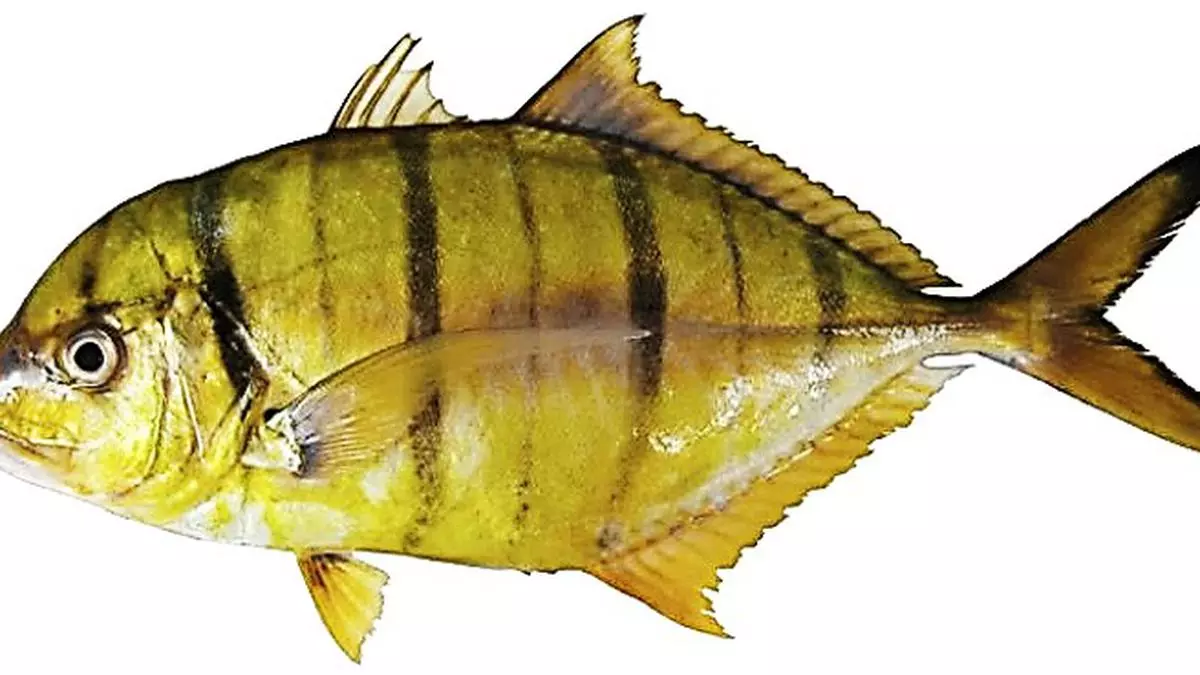Free Courses Sale ends Soon, Get It Now


Free Courses Sale ends Soon, Get It Now



Disclaimer: Copyright infringement is not intended.
Context:
Details of the study:
Golden trevally
Significance:
Central Marine Fisheries Research Institute (CMFRI)
Its main goals are:
One of CMFRI's important accomplishments is the development and refinement of a unique method for the estimation of fishery catch and effort from the over 8000 km coastline called the "Stratified Multistage Random Sampling Method”.
Source:
|
PRACTICE QUESTION Q) Consider the following statements about the Golden Trevally (Gnathanodon speciosus): 1) It is primarily found in deep-sea waters. 2) Its scientific name is Gasterosteus aculeatus. 3) Juveniles of this species have silver-grey coloration. 4) It is not suitable for mariculture due to slow growth rates. How many of the above statement(s) is/are correct? A.Only one B.Only Two C.Only Three D.All four Correct answer: c) Explanation: Statement 1 is Incorrect: Golden Trevally is a reef-associated fish, which means it primarily inhabits shallow waters near coral reefs, not deep-sea waters. Statement 2 is Incorrect: The scientific name for the Golden Trevally is Gnathanodon speciosus, not Gasterosteus aculeatus. Scientific names are specific to each species, and Gasterosteus aculeatus refers to a different species of fish known as the three-spined stickleback. Statement 3 is Correct: This statement accurately describes the coloration of juvenile Golden Trevally. Juveniles have silver-grey coloration with golden hues and black bands, making them visually appealing and popular for aquarium keeping. Statement 4 is Incorrect: Golden Trevally is considered an ideal candidate for mariculture due to its faster growth rates, good meat quality, and high market demand. |
© 2024 iasgyan. All right reserved